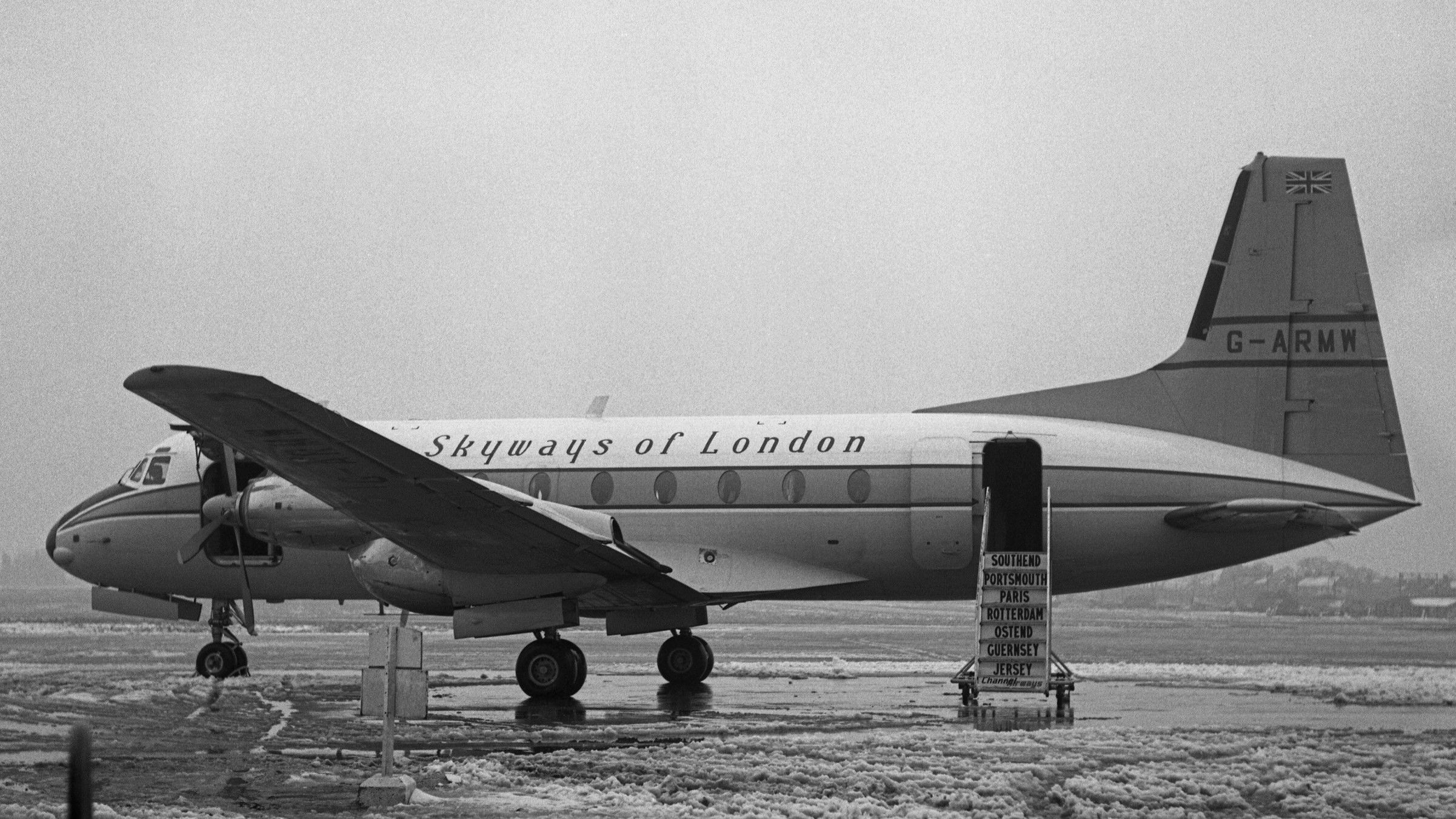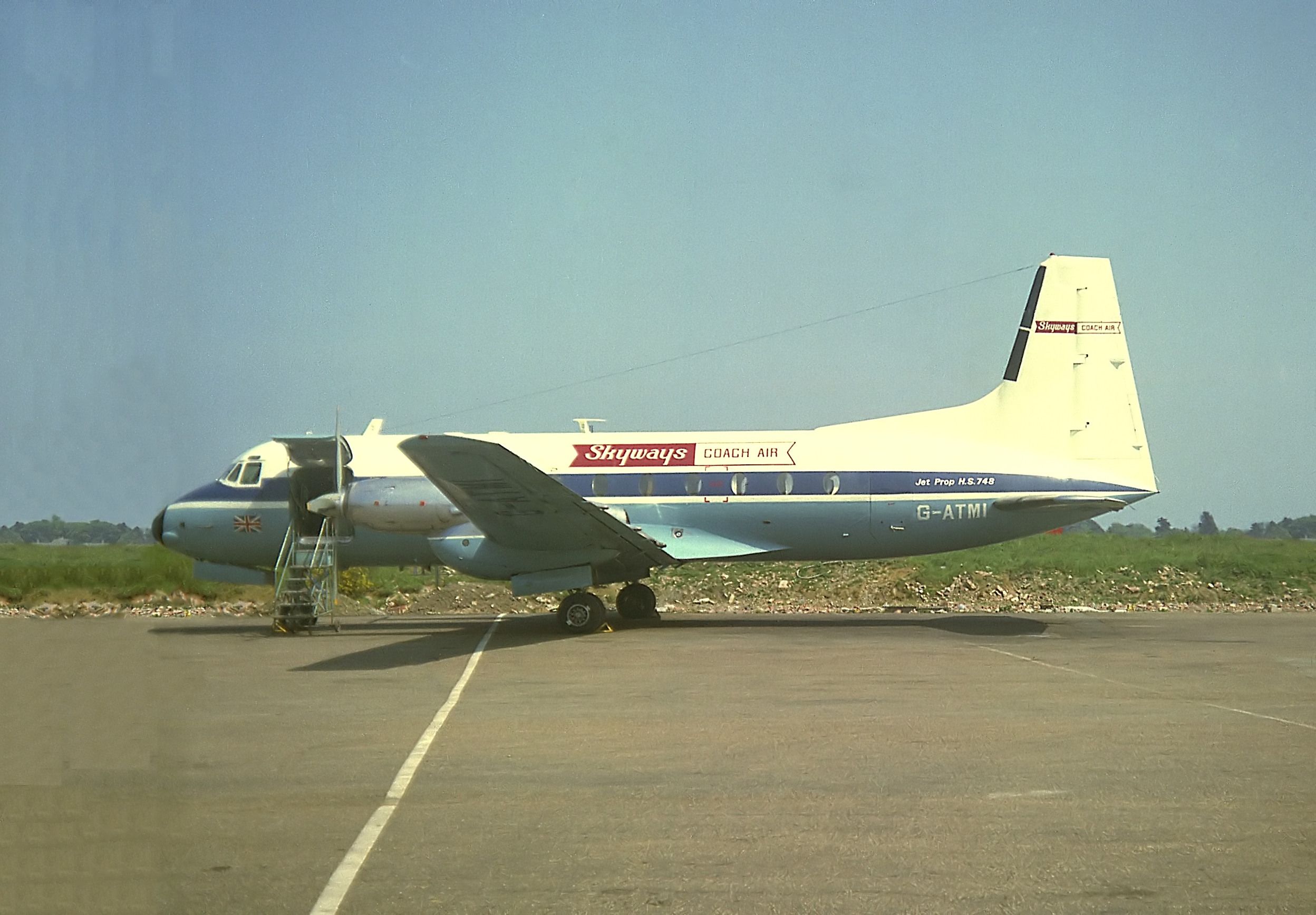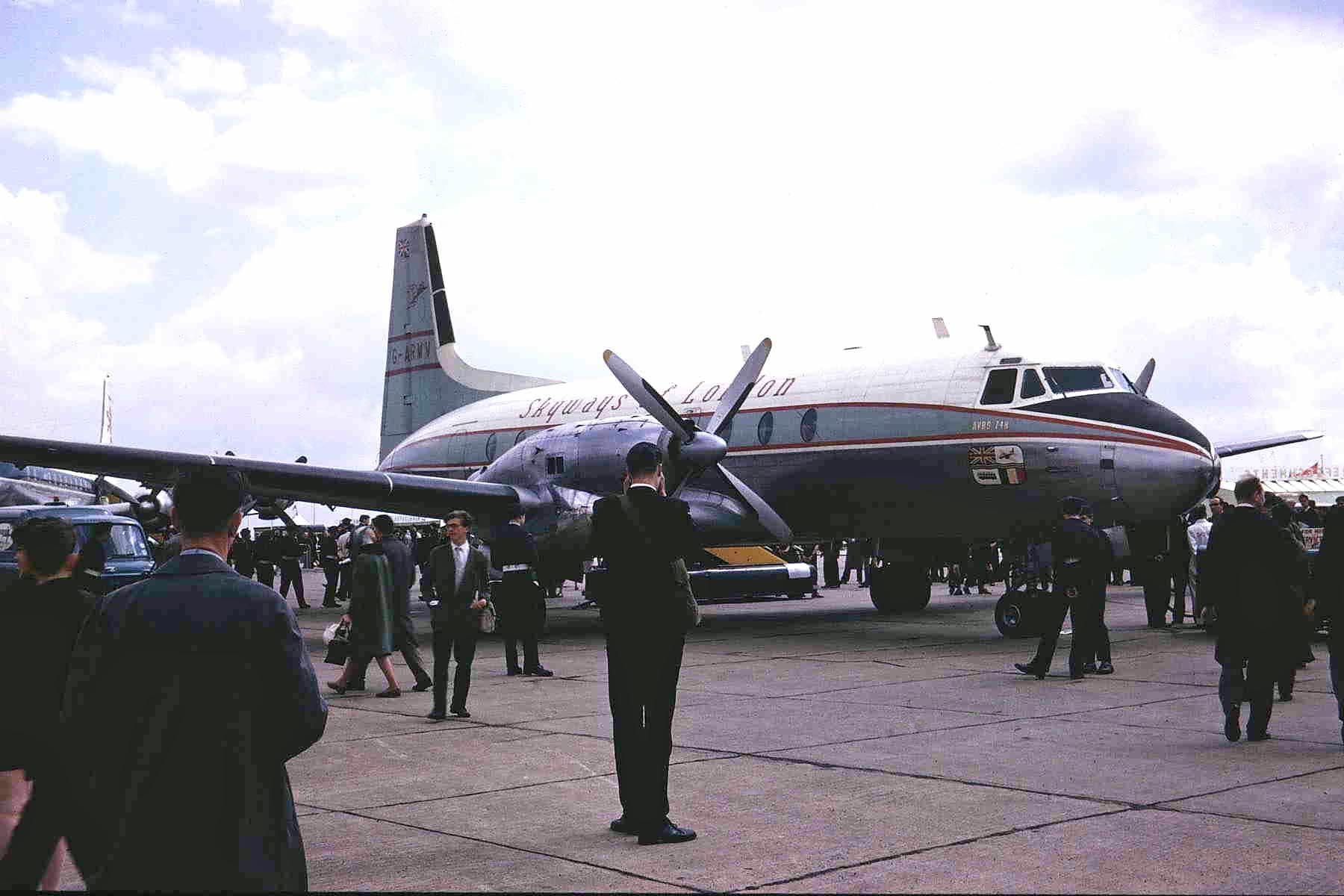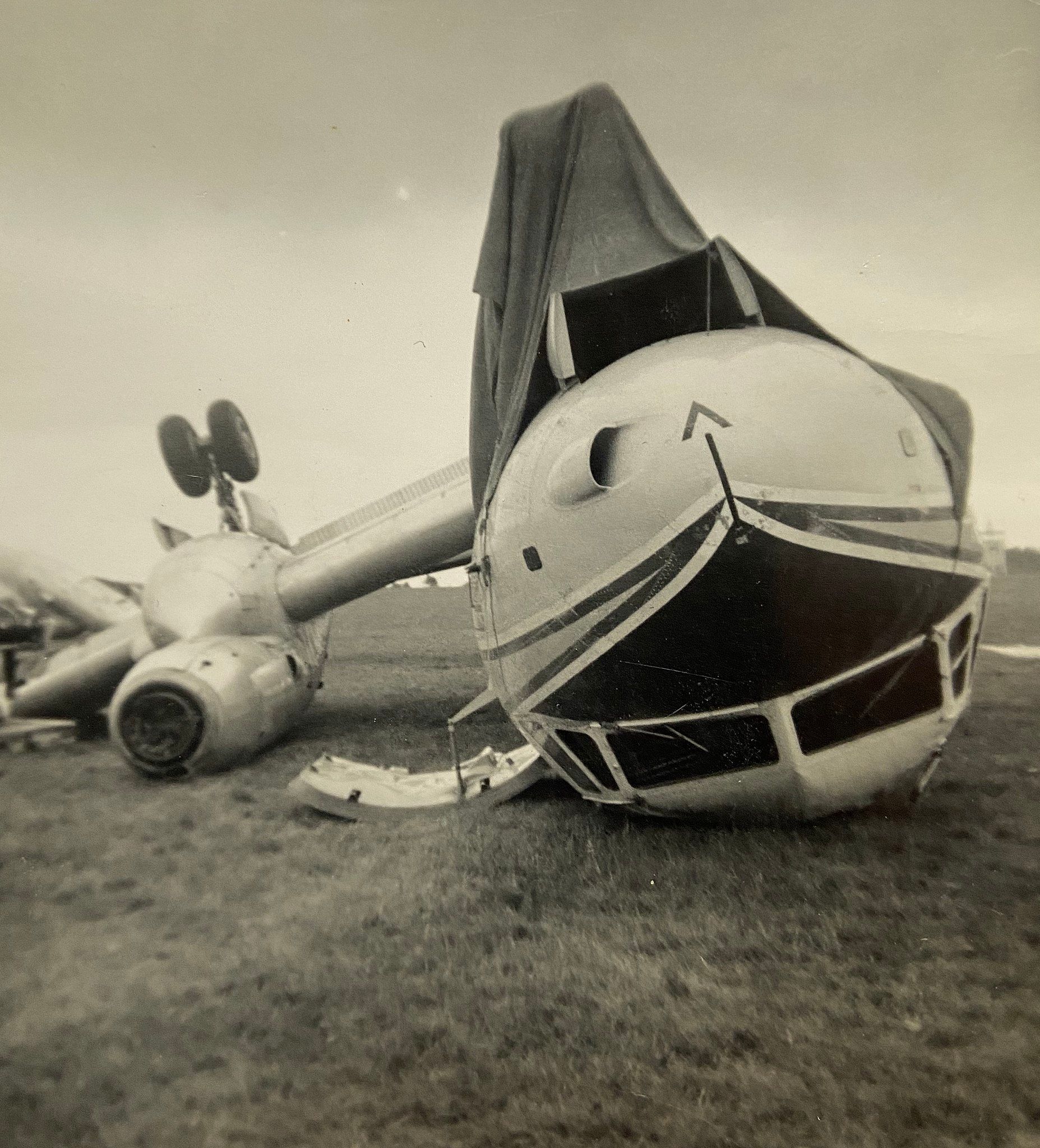At smaller airports, runways with grass surfaces are not an uncommon feature. However, they typically only handle smaller aircraft, with larger planes making use of the paved landing strips that have become more common as flying machines have increased in size and weight. Back in 1965, for one Avro 748 turboprop airliner, a grass runway would result in terminal damage.
On its way home
Also known later in its service life as the Hawker Siddeley HS 748, the Avro 748 turboprop first flew in 1960 and almost 400 examples of the type were produced between then and 1988. The design could typically seat between 40 and 58 passengers, depending on the exact aircraft type and seating configuration used.
One operator of this vintage aircraft type was Skyways Coach-Air Limited, which flew low-cost services between Lympne Airport in Kent and Beauvais Airport in northern France. Combined with coach transfers from London and to Paris, this formed part of an affordable itinerary between the British and French capital cities, starting in 1955, which preceded the low-cost revolution that would follow.
On July 11th, 1965, a Skyways Coach-Air Avro 748, registered as G-ARMV, took off from Beauvais at 16:51 local time with 48 passengers and four crew members onboard. According to Aviation Safety Network, this airframe was around four years old at the time and had amassed a total of 3,432 flight hours. Unfortunately, despite its young age, its journey back to Lympne would be its final flight.
Challenging conditions
During the course of the aircraft’s flight back to Kent, visibility in Lympne deteriorated from 2,000 to just 1,000 meters. The wind speed at the destination remained consistent at 18 knots (33 km/h), although there were gusts as high as 26 knots (48 km/h). Interestingly, the minimum visibility required to land at Lympne was 1,100 meters, a full 10% higher than was being reported.
However, after the flight’s Captain was eventually told that the conditions were gradually improving, it continued towards its destination. The decision was made to approach the airport under instrument flight rules (IFR), which was initiated 3.5 NM (6.5 km) from the airport. The Avro 748 subsequently descended at a rate of 350 – 400 feet per minute, equating to a three-degree glide slope.
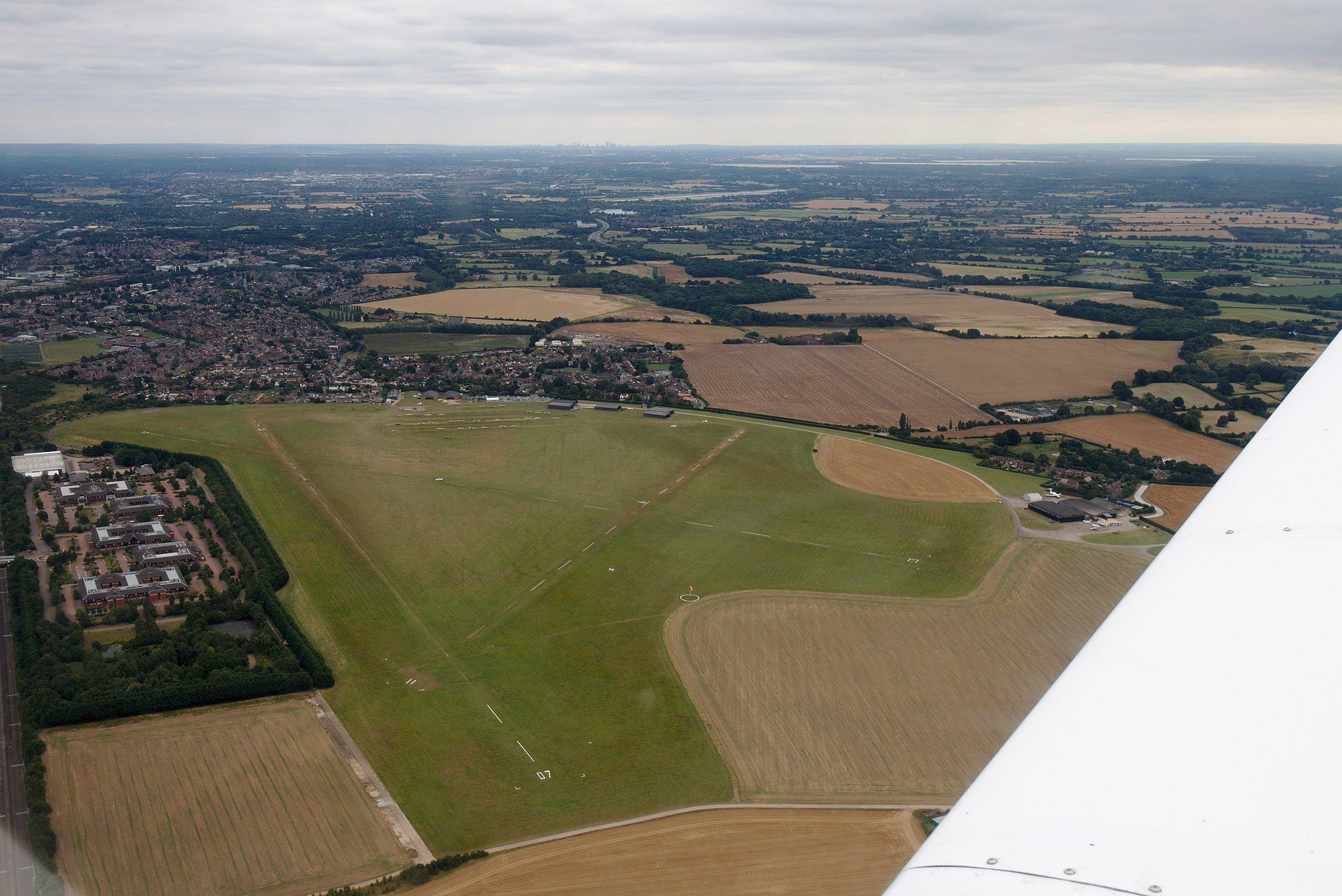
Related
Where Are The World’s Longest Grass Runways?
You’ve probably heard a lot about the world’s longest runways in general, but what about these impressive unpaved strips?
Just 0.25 NM (0.46 km) before landing on the grass surface of Lympne’s runway 20, the aircraft encountered turbulence, which forced it to the right of the center line. Despite the crew fighting to keep the plane level during its landing flare, its right wing dropped suddenly, causing the landing gear on this side to come down heavily, whereupon it dug into the soft, grassy surface.
Grassy inversion
The way in which the right-hand landing gear dug into the grass caused it, along with the engine nacelle and wing that had previously been present on this side of the aircraft, to separate from the rest of the plane. Its unexpected impact also caused the now severely damaged Avro 748 aircraft to flip over, and it slid along the grassy runway in an inverted manner, coming to a stop after 370 meters (1,214 feet).
Despite extensive damage to the aircraft, pictured below in the aftermath of the crash, all 52 passengers and crew onboard survived the accident. However, the plane wasn’t so lucky, becoming the first Avro 748 to be written off. While several passengers were treated for shock, including three transported to the hospital, some 36 were able to continue to London by coach as planned. An investigation into the accident stated the probable cause to be “a heavy landing following an incomplete flare from a steeper than normal approach.”
As for Lympne Airport, FlightGlobal‘s archive material notes that the former military airfield had previously faced waterlogging issues with its grass runway that led to two temporary closures in the 1950s. It was eventually replaced with a concrete strip in 1968, with the new 4,500-foot runway (1,372 meters) opening in April of that year. Commercial flights ceased in 1974, and the airport closed a decade later.
About the Avro 748
The Avro 748 was developed in the 1950s as a short-haul, regional aircraft with the operational capabilities to fly out of less-developed airfields, such as those with unpaved or grass runways. With a takeoff distance of 1,070 meters (3,510 feet) and a landing distance of 910 meters (2,986 feet), the turboprop could handle regional airports that many other commercial aircraft in the era could not.
|
Spec |
Avro 748 |
|---|---|
|
Engines |
2 x Rolls-Royce Dart turboprop engines |
|
Cruise Speed |
402 km/h (250 mph) |
|
Max Speed |
452 km/h (281 mph) |
|
Range |
2,140 km (1,330 miles) |
|
Passenger Capacity |
Typically between 40 – 58 |
|
Length |
20.42 meters (67 feet) |
|
Wingspan |
30.18 meters (99 feet) |
|
Height |
8.47 meters (27 feet 9 inches) |
|
Max Takeoff Weight |
21,319 kg (47,000 lbs) |
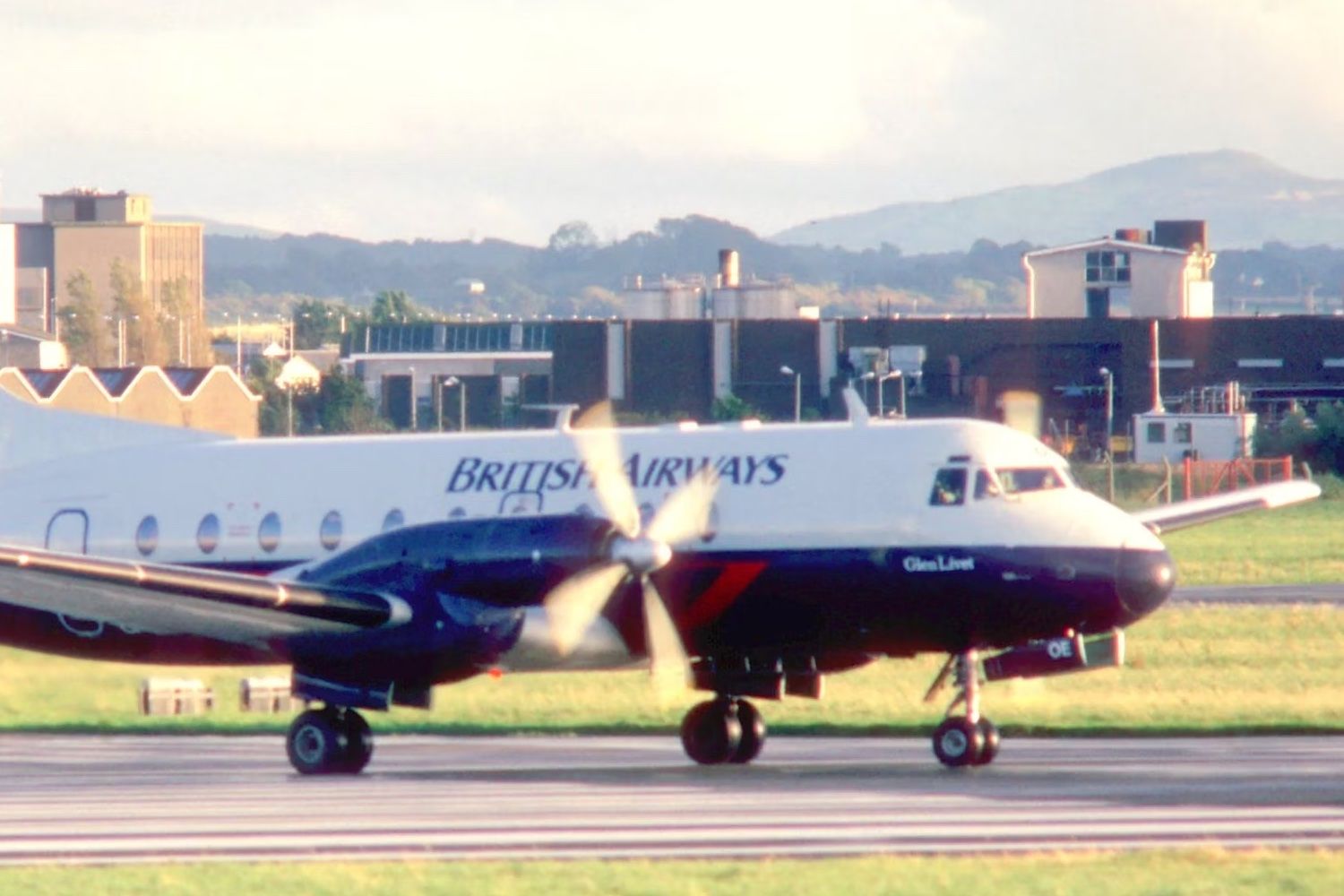
Related
Almost 400 Examples Built: The Story Of The Hawker Siddeley HS 748
The HS 748 was a replacement for the DC-3.
There were around 380 Avro 748s built over the plane’s production run, which spanned from 1960 until 1988. According to Avro Heritage Museum, a small number of 748s are still in service today, including cargo and military variants.
What do you make of this incident? Have you ever flown on an Avro/Hawker Siddeley HS 748? Let us know your thoughts and experiences in the comments!

